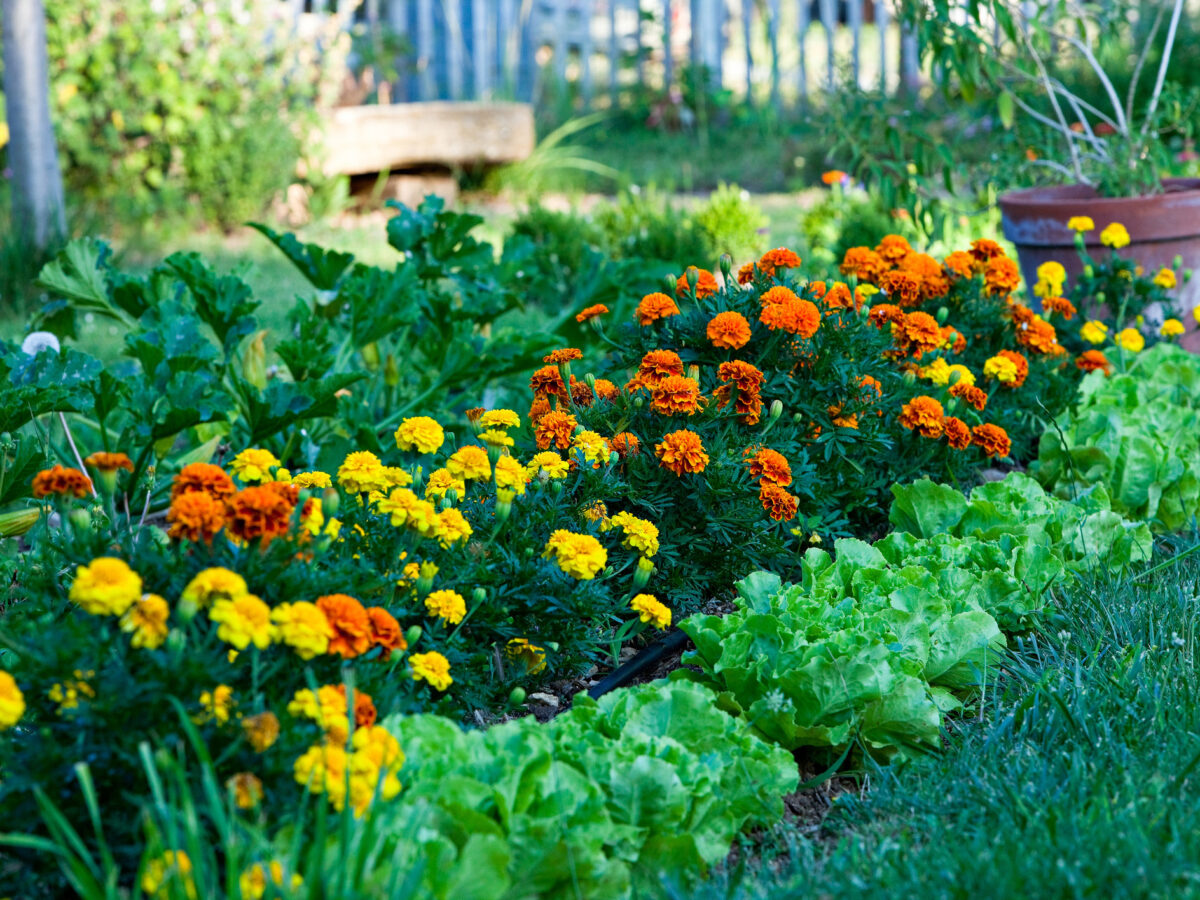
8 Essential Things to Do in Your Garden This Summer
It’s go-time in the garden! What to do in your garden no matter where you are in the West.

Rosemary Calvert/Getty Images
Wondering what you should be planting, harvesting, and keeping an eye on this growing season? Here’s your summer garden checklist to help you keep on top of garden maintenance.
Plant

Philippe S. Giraud/Getty Images
Sow for a second flush of blooms. Marigolds, sunflowers, cosmos, zinnias, and nasturtiums can be added to beds and interplanted with vegetables to ensure color through autumn while encouraging visiting pollinators. Create a cut-and-come-again salad bar of lettuces in shadier areas of the garden. Shallow roots allow easy interplanting with vining summer-season crops like tomatoes and cucumbers, which will provide sun relief on hot days. Try mixing in a few showy varieties such as Purple Mizuna, Flashy Trout Back, and Rossa Ricciolina tucked in with alliums to keep pests away from tender leaves.
Harvest

Thomas J. Story
Radishes bolting? Leave the blooms for the bees and wait for tender seed pods to form. Once they’re 1-2 inches long, pick and pickle in your favorite brine for a flavorful, crisp summer snack. We love enjoying them with a little za’atar spice blend and fresh dill on top of a burrata toast. Frequently check beans, basil, peppers, cucumbers, and zucchini, and harvest often to promote additional growth and fruit production. Harvest in the morning when vegetables tend to be more sweet, crisp, and juicy—although nothing is better than a warm cherry tomato straight off the vine.
Maintain

Photo by Neslihan Gunaydin on Unsplash
Summer soil will need replenishing for heavy feeding plants such as tomatoes, eggplant, and squash. When flowers start to form, apply a low-nitrogen fertilizer to promote healthy bloom production. We like to add a combo of Recipe 420 organic fertilizers Ultra Bloom and Recharge, which include biochar, calcium, and magnesium for robust bloom and fruit production.
Check bird baths, planter saucers, and other hidden areas for standing water and eliminate any opportunity for mosquitos to move in. Try adding a solar-powered bubbler to your bird bath to keep feathered friends happy and bugs at bay.
Protect

Robert Moore/Getty Images
As temps start to heat up, soil needs protection in the form of additional mulch, compost, or dense plantings. Even adding easy-to-grow vegetables like squash placed within existing landscaping can keep soil temperatures cool and surrounding plants protected throughout the summer.
Create a fire-season checklist to stay mindful of safety maintenance. Overgrown wild grasses, weeds, and any dead growth from shrubs and trees should be pruned back. Consider swapping out combustible shrubs with fire-safe native plantings such as Ceanothus.
We only recommend things we love. If you buy something through our site, we might earn a commission.
